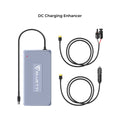Solar cells are an increasingly popular form of renewable energy, and with good reason. They are a clean, green alternative to traditional forms of electricity production, such as fossil fuels. In this guide to solar cells, we'll take a look at some of the different types of solar cells available and how they work. We'll also explore the advantages and disadvantages of using solar energy over other forms of power generation.
How Solar Cells Work
A solar cell is essentially a semiconductor device made up of two layers—a positively charged top layer and a negatively charged bottom layer. When these two layers come into contact with sunlight, electrons move from the negative layer to the positive layer. This movement creates an electrical current, which can then be used for various applications.
A solar cell’s efficiency depends on how well it absorbs light from its surroundings. To maximize efficiency, some solar cells are designed with tiny pockets known as “photovoltaic” or “PV” cells that capture more light than traditional flat surfaces. These PV cells can absorb more light because they create multiple pathways for electrons to travel between the positive and negative layers. They also allow for greater surface area exposure for optimal absorption of sunlight.
Solar cells also need to be protected from heat and moisture damage if they are going to last any length of time in outdoor environments. That’s why most modern solar panels have several layers of protective coatings applied to them before they leave the factory. These coatings help reflect excess heat away from the panel while keeping moisture out so that your panel will continue functioning properly even after years of use in harsh conditions.
Types of Solar Cells

Monocrystalline
Monocrystalline solar cells have a number of advantages compared to other types of solar cells. They are the most efficient, converting more sunlight into electrical energy than any other type. Though they are also the most expensive, their complex manufacturing process is worthwhile because the energy generated through them can be trusted to continuously deliver high performance over a long period of time.
Additionally, monocrystalline cells take up less space than polycrystalline when installed on roofs because their shape optimises the amount of power generated in confined areas. With all these benefits on offer, it’s obvious why monocrystalline cells remain a popular choice amongst homeowners looking to go solar.
Polycrystalline
Solar cells are becoming increasingly popular due to their efficiency in producing energy, and plenty of people are curious about which type might be best for them. Polycrystalline solar cells are a great guide to understanding what types of solar cells are available.
These solar cells are made from multiple crystals of silicon and, as such, aren't quite as efficient as monocrystalline solar cells. Still, they have the significant advantage of being less expensive to produce. As such, polycrystalline solar cells can offer great value in addition to making use of renewable energy and helping us reduce our environmental impact.
Thin-film
Thin-film solar cells are an innovative technology that serves as a cost-effective option for rooftop solar installations. With the installation of thin-film solar panels, consumers can enjoy most of the benefits associated with traditional solar systems without the associated high costs.
These cells are made from a thin layer of material such as cadmium telluride or amorphous silicon. While they may be less efficient than monocrystalline and polycrystalline cells, their flexibility makes them great for rooftop installation. From carport roofs to tight spaces on structures, thin-film modules provide a viable and economical solution to reaping full benefits from the process of converting energy from the sun into power.
Concentrated photovoltaic (CPV) cells
Concentrated photovoltaic (CPV) cells are a promising and exciting new way to capture solar energy. These innovative devices use lenses or mirrors to concentrate concentrated sunlight onto a small area of high-efficiency solar cells, meaning that much more energy can be collected than from traditional flat-plate PV systems.
Employing CPV technology allows for higher electrical outputs per unit installed cost, making them an attractive intersection between efficiency and affordability for large-scale renewable energy production. The reaction is increasingly positive towards CPV systems in the scientific community, with many hoping its capabilities could become an important part of our global future energy mix.
Organic solar cells
Organic solar cells are rapidly becoming a popular low-cost alternative to traditional silicon-based solar cells. Due to their unique composition of carbon-based materials, organic solar cells are challenging traditional materials in the photovoltaic market.
Though these cells may not be able to generate energy at the same efficiency as traditional cells, they offer distinct advantages due to their flexible and lightweight properties. This makes them ideal for use in portable applications, such as cell phone chargers or even clothing that can store and provide power on the go.
In addition, organic solar cell technology is actively being researched and developed with the aim of further improving its efficiency. With this type of innovative thinking, it's likely that organic solar cells will soon make huge leaps in being able to provide sustainable energy for consumer products across the globe.
Best Solar Cells for Portable Solar Panels

The most common type of solar cell used in portable solar panels is monocrystalline silicon. Monocrystalline silicon is made up of single-crystal silicon, which gives it its name. This type of cell is more expensive than other types, but its efficiency rate and durability make it well worth the extra cost.
Monocrystalline silicon isn't the only option, though; polycrystalline and amorphous cells are also available. Polycrystalline cells are made up of several smaller crystals, so they don't absorb light as efficiently as monocrystalline cells do. Amorphous cells don't have any crystalline structure at all—instead, they're thin films that are sprayed onto glass or plastic sheets—so they're cheaper but not as efficient or durable as monocrystalline cells.
Efficiency Rates
When looking at different types of solar cells, you'll want to pay attention to their efficiency rates. This is a measure of how much energy the cell can convert from sunlight into usable electricity.
Generally speaking, monocrystalline silicon has the highest efficiency rate—around 19-20%—while polycrystalline and amorphous cells have efficiency rates of around 12-13%. Higher efficiency rates mean that your panel will be able to generate more power in less time, so they're worth paying extra for if you can afford it.
Durability
It's important to consider how durable the solar cell is when choosing one for your portable solar panel. Monocrystalline silicon is by far the most durable option; it's made out of solid pieces of silicon and won't degrade over time like polycrystalline or amorphous cells can.
This means that your panel will last longer and provide reliable power even after years of use in harsh environments like deserts or mountainsides where temperatures can get extreme.
Advantages of Solar Energy
Solar Energy is a Renewable Resource
Renewable energy sources like solar power are a cost-effective, reliable, and clean solution for our growing energy needs. By harnessing the power of the sun, we can provide renewable energy that is both environmentally-friendly and inexhaustible. Solar energy is also much more efficient and safe than relying on finite resources such as fossil fuels, which can cause pollution and require costly extraction efforts.
In addition to being affordable, solar technologies help us limit our reliance on fossil fuels for electricity production, lifting some of the burdens off the planet’s health. Solar power has quickly climbed in popularity due to all of these benefits: it provides an abundant, clean alternative to nonrenewable energy sources—and will continue to do so indefinitely.
Solar energy is Free
Solar energy has become an increasingly popular form of energy due to its low cost and abundance. By utilising sustainable energy sources such as the sun, we can have access to a huge amount of free electricity. Once solar panels are installed, they will provide us with clean, renewable energy that comes from the sun without us having to worry about any recurring costs.
Not only is solar energy free upfront but also it leads to significant savings in the long term. Therefore, using solar power for homes and businesses can be a great way to reduce the rising electricity bills that are associated with other forms of energy. In conclusion, solar energy is one of the most desirable forms of renewable energy as it is both clean and inexhaustible - and best of all - it’s free!
Solar Energy is Clean
Solar energy is an appealing source of renewable energy as it doesn’t add any additional pollutants to the atmosphere. Solar energy systems don’t involve burning anything to generate electricity, making them incredibly clean and efficient sources of power that provide a safe solution for reducing the number of toxins we put into the environment.
We awaken to sunrises, bask in midday sunshine, and yield our gratitude to sunset at the end of a long day—without solar, these sights wouldn’t be possible for us to enjoy. By implementing solar energy into our daily lives, we can not only admire its beauty, but also use it in an effort to combat climate change—all while feeling secure that our planet is being protected from potentially fatal pollutants.
Disadvantages of Solar Energy
Solar Energy is Not Constant
The sun provides an incredible amount of energy every second, but our planet's weather and time can put a damper on the power it produces. During daylight hours, solar panels are able to capture and generate electricity by harnessing sunlight; this source can be used to power households and utilities.
However, that electricity generation will not occur if the day is cloudy or the night has fallen. As the sun sets, solar panels are rendered ineffective at capturing and converting sunlight into clean energy. Fortunately, technologies such as wind turbines and battery systems offer more dependable sources of renewable energy when the sun isn't shining.
By properly utilising these resources in combination with solar panels, we can obtain a steady, sustainable supply of electricity without needing to rely solely on the sun's natural flow of power.
Solar Energy is Not Widely Available
Solar energy is becoming increasingly popular due to its affordability and natural sources. Despite its potential, there are definite limitations when it comes to utilising solar power, primarily in terms of the availability of direct sunlight. While it can be utilised in sunny climates to great effect, shady and cloudy locations will experience inconsistent returns due to the need for direct sunlight.
Furthermore, appropriate spot installation is also a challenge - solar panels require open spaces like rooftops or other flat surfaces in order to receive adequate light from the sun. Those without easy access may find that their best option for solar energy is limited - or even non-existent!
Looking for Portable Solar Panels?
Solar cells offer many advantages over traditional forms of electricity production and are becoming increasingly affordable, making them a great option for those looking to invest in renewable energy. However, there are still some drawbacks to solar panels, such as the high installation cost and their reliance on sunlight.
With this guide to solar cells in hand, though, you should now have all the information you need about solar cells so you can make an informed decision about whether they're right for your energy needs or not! If you're interested in portable solar panels, we offer reliable products and excellent customer service.












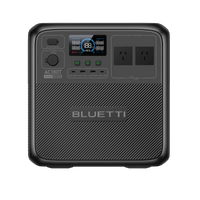












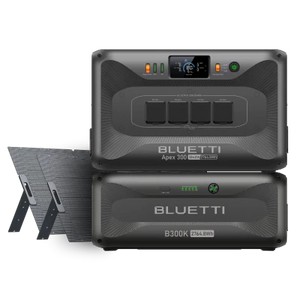





















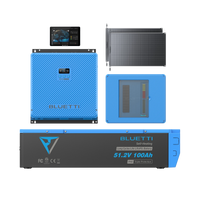





















![[Phased Out] BLUETTI B80P Expansion Battery | 806Wh](http://www.bluettipower.com.au/cdn/shop/files/202310025B80P_2000-2000px_4_4caa0c1c-4dab-4272-9e9b-2b7507e5bd81.jpg?v=1713777870&width=200)
![[Phased Out] BLUETTI B210P Expansion Battery | 2,150Wh](http://www.bluettipower.com.au/cdn/shop/files/2_08cf9ef3-03a4-4489-b641-d3edb8094896.webp?v=1716016566&width=200)
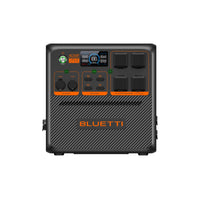


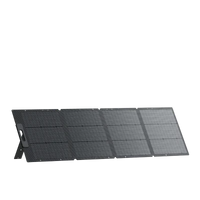


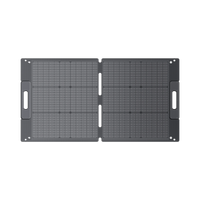





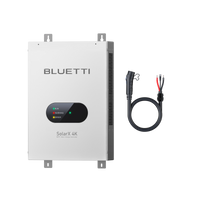






















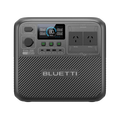

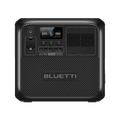






























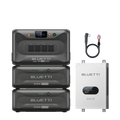



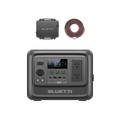





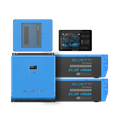














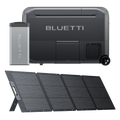




















![[Phased Out] BLUETTI B80P Expansion Battery | 806Wh](http://www.bluettipower.com.au/cdn/shop/files/202310025B80P_2000-2000px_4_4caa0c1c-4dab-4272-9e9b-2b7507e5bd81.jpg?v=1713777870&width=120)
![[Phased Out] BLUETTI B210P Expansion Battery | 2,150Wh](http://www.bluettipower.com.au/cdn/shop/files/2_08cf9ef3-03a4-4489-b641-d3edb8094896.webp?v=1716016566&width=120)


















